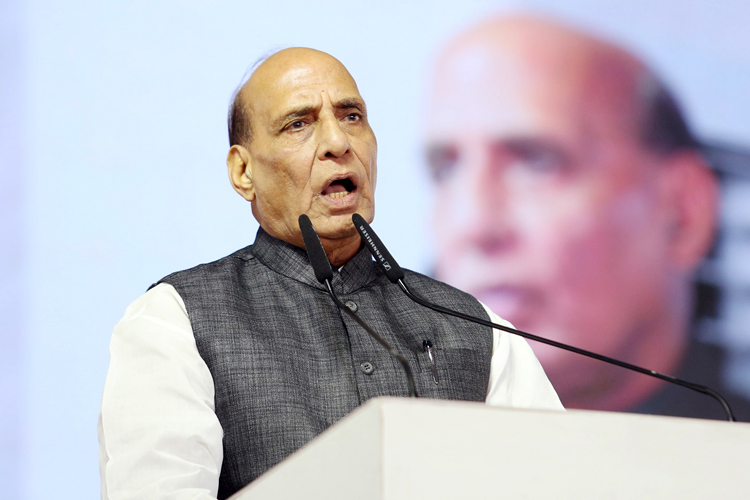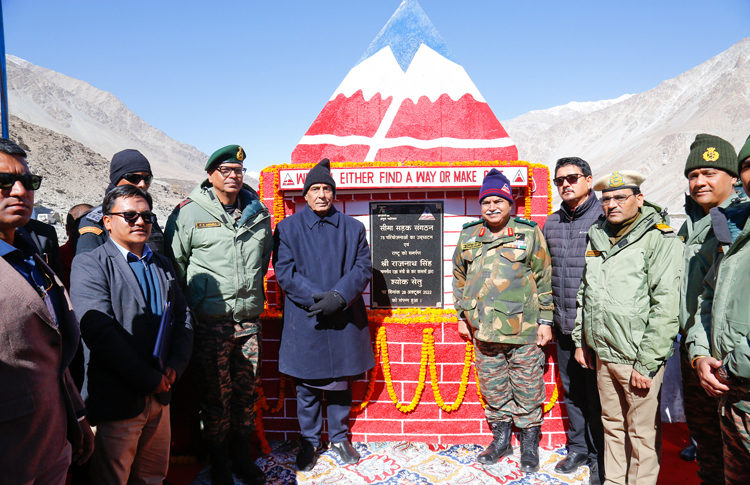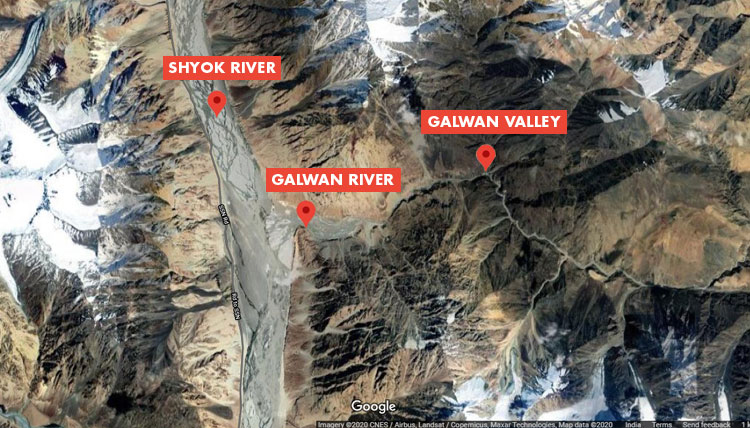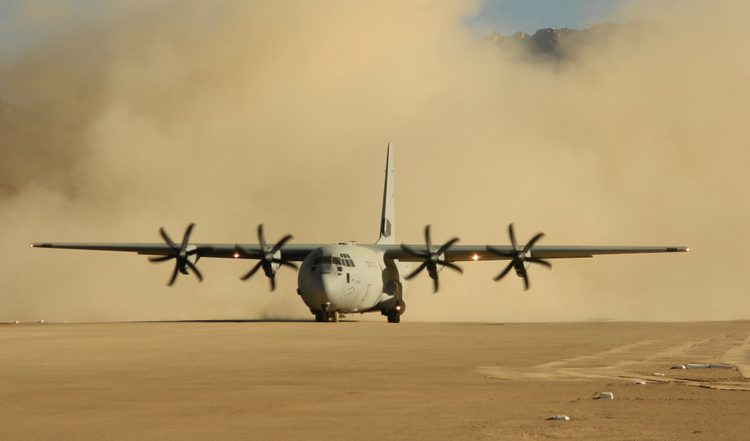INDIAN ARMED FORCES CHIEFS ON OUR RELENTLESS AND FOCUSED PUBLISHING EFFORTS

The insightful articles, inspiring narrations and analytical perspectives presented by the Editorial Team, establish an alluring connect with the reader. My compliments and best wishes to SP Guide Publications.

"Over the past 60 years, the growth of SP Guide Publications has mirrored the rising stature of Indian Navy. Its well-researched and informative magazines on Defence and Aerospace sector have served to shape an educated opinion of our military personnel, policy makers and the public alike. I wish SP's Publication team continued success, fair winds and following seas in all future endeavour!"

Since, its inception in 1964, SP Guide Publications has consistently demonstrated commitment to high-quality journalism in the aerospace and defence sectors, earning a well-deserved reputation as Asia's largest media house in this domain. I wish SP Guide Publications continued success in its pursuit of excellence.
- Operation Sindoor: Resolute yet Restrained
- India’s Operation Sindoor Sends a Clear Message to Terror and the World – ‘ZERO TOLERANCE’
- Japan and India set forth a defence cooperation consultancy framework, talks on tank and jet engines
- Terrorist Attack in Pahalgam in Kashmir: Unfolding a long surgical war against PAK
- Lt General Pratik Sharma takes over Command of Indian Army's Northern Command
New Alternative Road to DBO
India Accelerates Strategic Road Project to Fortify Ladakh's Daulet Beg Oldi Post
 |
The Author is Former Director General of Information Systems and A Special Forces Veteran, Indian Army |

India is on the verge of linking Daulet Beg Oldi (DBO), one of the forward posts in Ladakh, with a new road. The existing road linking Leh to DBO through Darbuk-Shyok is 255 km long. The new road being built by the Border Road Organisation (BRO) is 130 km; branching off from Sasoma in the Nubra Valley which is on the route to the Siachen Base Camp from Khardung La. According to media reports, around 2,000 people are working on the project; racing to complete the road by the end of November 2023.
The new road under construction follows the alignment of Sasoma-Saser La-Saser Brangsa-Gapshan-DBO. Large sections of the existing Darbuk-Shyok-DBO road were visible to the enemy. In contrast, the new road will be mostly concealed from enemy observation from the east, in the direction of Depsang, making it less vulnerable to attacks and facilitating movement of troops and equipment. At the same time, large stretches of the new road would be visible to anyone sitting on the Karakoram (KK) Pass.
India is swiftly advancing towards connecting Daulet Beg Oldi (DBO), a pivotal forward post in Ladakh, with a new 130 km road, strategically branching off from Sasoma in Nubra Valley.
It may be recalled that in 2013, the Chinese People's Liberation Army (PLA) had intruded 19 km inside Indian Territory in the Raki Nala area of Depsang plains in Ladakh. Indian troops responded to the Chinese presence by establishing a camp 300 metres away. The PLA intrusion continued for some three weeks, including through the visit of Chinese Prime Minister Li Keqiang to India in May 2013. Ultimately, the PLA withdrew but only after India agreed to the Chinese demand of demolishing bunkers and removing the surveillance equipment from Chumar, 200 km south of Depsang.

During the Chinese aggression in Eastern Ladakh in April-May 2020, PLA troops have again intruded 20 km deep in Depsang Plains and established themselves at Y Junction. This prohibits Indian troops from patrolling a number of patrolling points along the Line of Actual Control (LAC). Despite continuing military-to-military level talks, China has indicated there would be no more falling back of the PLA. This has made DBO vulnerable from the direction of Depsang and Galwan.
The new road, constructed by the Border Road Organisation (BRO), promises enhanced security as it follows an alignment less susceptible to enemy observation from the east, safeguarding movements and equipment
A BRO official told the media that latest technologies are being employed to clear construction hurdles in the final lap of the new road to DBO. He also said that several key sections of the Sasoma-Saser La-Saser Brangsa-Gapshan-DBO have already been completed. Completion of the road by the end of November 2023, however, will depend on the severity of winter, which restricts construction activities in such high altitude and glaciated areas.

It should be noted that the cutting of the road from Sasoma to Saser La had begun immediately in the aftermath of the Kargil Conflict in 1999. This was because the PLA had intruded into Sub Sector North (SSN) south of KK Pass even then. There is no doubt that the Sasoma-Saser La-DBO road has to pass through a shifting glacial area but we should have pressed on with its construction, as the Army wanted. But the momentum was lost. The urgency should have again been reinforced in 2013 when the Chinese intruded 19 km deep inside Depsang Plains but armchair bureaucrats seldom grasp the strategic priorities as should be the case.
Historical incidents, including a 2013 intrusion by the Chinese PLA in Depsang plains and the 2020 aggression in Eastern Ladakh, emphasise the critical need for this alternative route to DBO.
The urgent need to complete this alternative road to link DBO would have been realised after the 2020 Chinese aggression in eastern Ladakh, the clash in Galwan and the PLA firmed at Y Junction, 20 km inside our territory in Depsang. Even now the challenge will be to complete it before heavy winter snowfall forces the construction work to stop; the balance work still requires finishing a stretch in steep glaciated terrain as well as building a bridge over the Shyok River. A perpetual challenge thereafter will be to keep the road open throughout the year, including through the glacial portion which keeps shifting.

Since the 2020 Chinese aggression in eastern Ladakh, India has no doubt ramped up border infrastructure development. In the last three years, the BRO has reportedly completed 300 crucial projects at a cost of 80 billion ($963 million). It was also brought out in these columns recently that on September 12, 2023, Defence Minister Rajnath Singh dedicated 90 infrastructure projects to the country constructed by the BRO at a cumulative cost of 2941 crore in Samba District of Jammu and Kashmir (J&K). According to an official statement, the projects have been constructed in 10 Border States and Union Territories (UTs) of the northern and North-Eastern regions.
India has significantly bolstered border infrastructure development, with the BRO completing 300 crucial projects costing 80 billion ($963 million) in the last three years, enhancing strategic capabilities along the LAC
It is reiterated once again that our scheme of Vibrant Villages needs to be reviewed in comparison to China's dual-use militarised villages on the border and some even across in India and Bhutan, which according to US reports also have integral air defence and electronic warfare elements. These villages have excellent road connectivity and are self-sustaining. In contrast, most of our villages in the Vibrant Village programme are quite far from the LAC and their self-sustainability is a question mark.

Pitted against China all along the LAC, we certainly need more forethought and depth in planning. For example, newspaper reports of October 3, 2023 have said that all Indo-Tibetan Border Police (ITBP) posts from Ladakh to Arunachal Pradesh will have an additional team of 4-5 Intelligence Bureau (IB) officers for surveillance and information gathering, and that this setup will be known as the Border Intelligence Post (BIP), who will be protected by the ITBP. The media has quoted an unnamed source refusing to disclose the amount sanctioned by the government for the project citing its sensitive nature.
One wonders whose brainwave this is. No doubt the IB used to maintain their posts when the border was sparsely manned and the IB was in charge of external intelligence. But in the above scheme, what surveillance and information gathering would the 4-5 IB officers at each ITBP post do which the ITBP boys cannot do?





